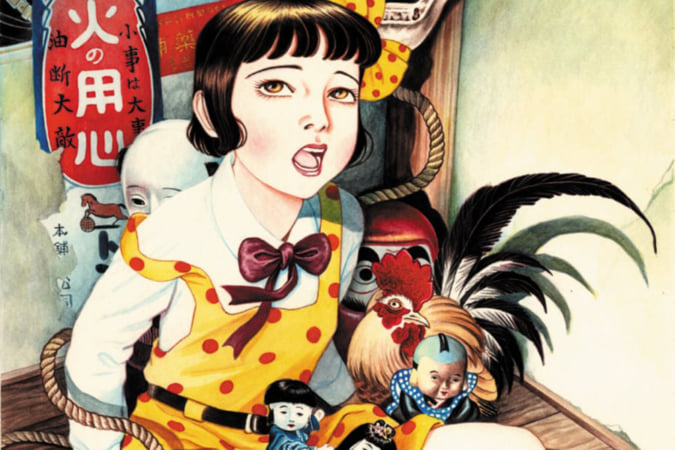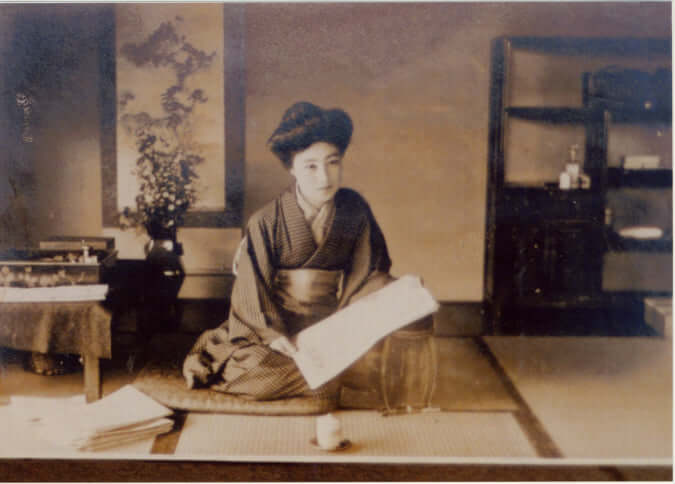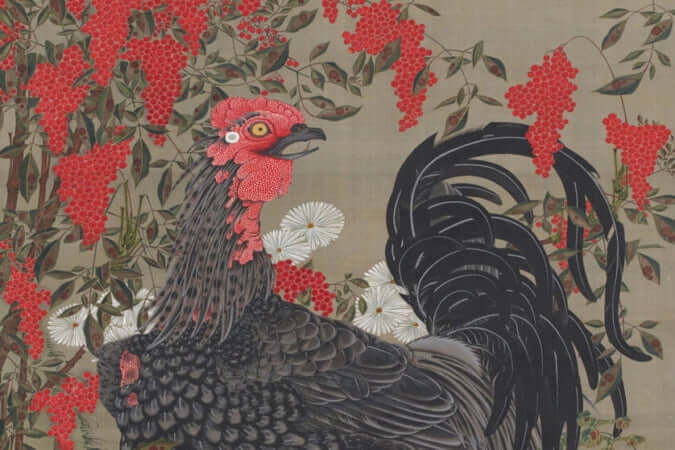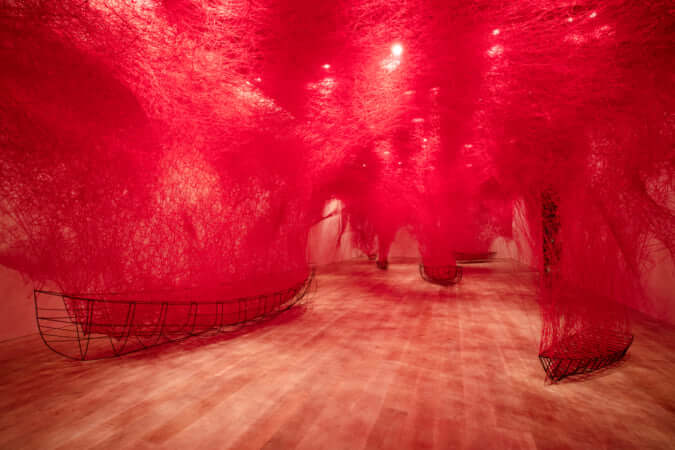From the Shadows to the Light
The Rise of Japanese Whisky #01
Disparaged and ridiculed for most of the 20thcentury, Japanese whisky has captured the palates of whisky lovers worldwide over the last decade. What led to the current craze and where does Japanese whisky go from here?
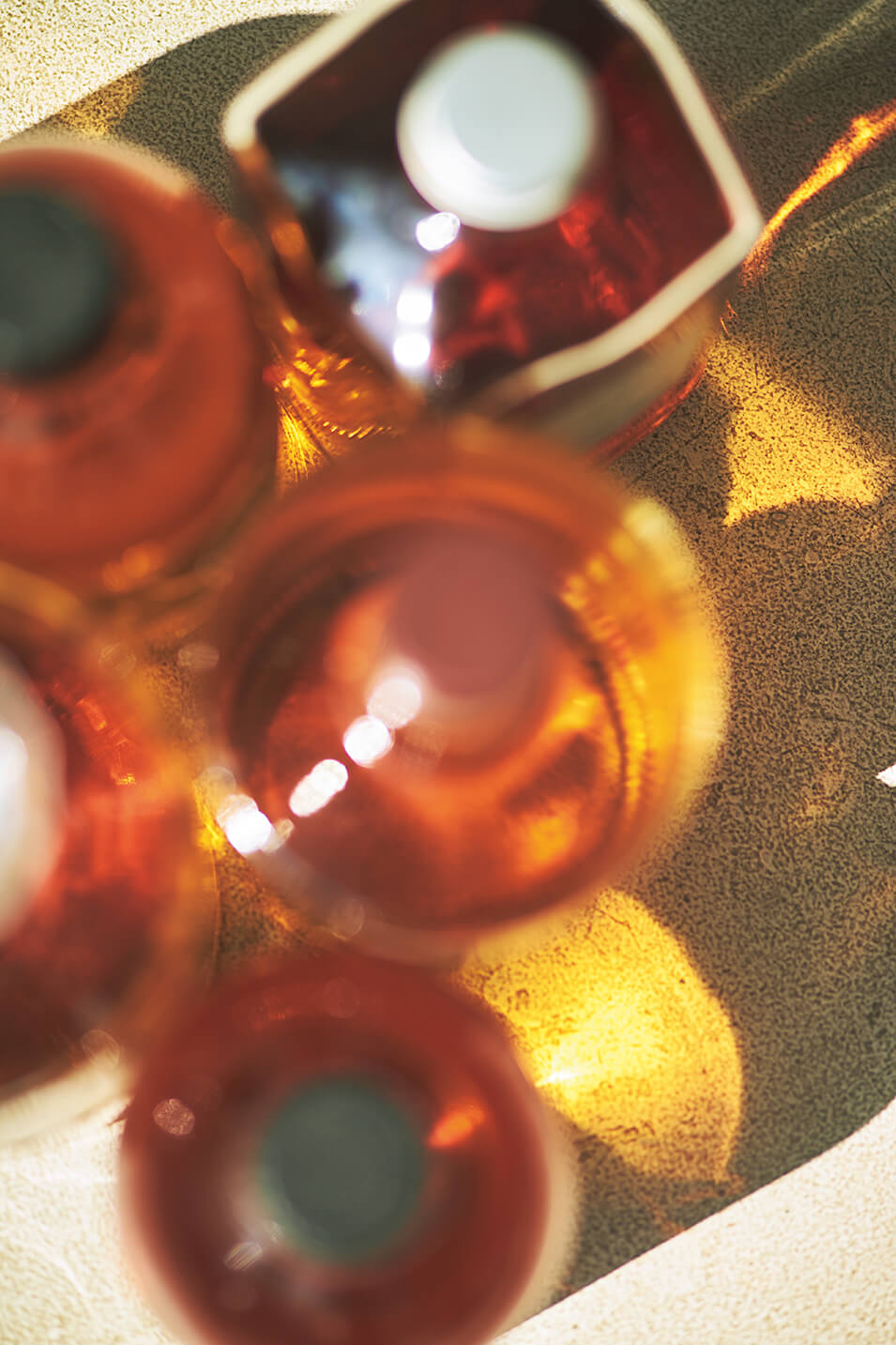
In many ways, whisky making is the ultimate gambling man’s game. The stakes are high but the outcome isn’t revealed until a decade or more later. In the meantime, of course, you have to keep playing. You can do everything right and still end up losing. Or you can play it safe and then, ten years down the line, when you’re winning, wish you hadn’t. As with all gambling situations, no one wins all the time. That just doesn’t happen.
Japanese whisky has been on a winning streak for the last ten years. Of the world’s five major whisky-producing regions, it’s the one with the youngest history – with not even a century of experience under its belt – yet it’s all the rage, at the moment. Demand far outstrips supply. Bottles fly off the shelves, provided they even reach the shelves. Prices paid at auctions keep skyrocketing and, unlike collectable bottles of Scotch that reach similar figures, they are for the most part 21st -century releases. The objective observer can’t help but wonder: why Japanese whisky? And why now?
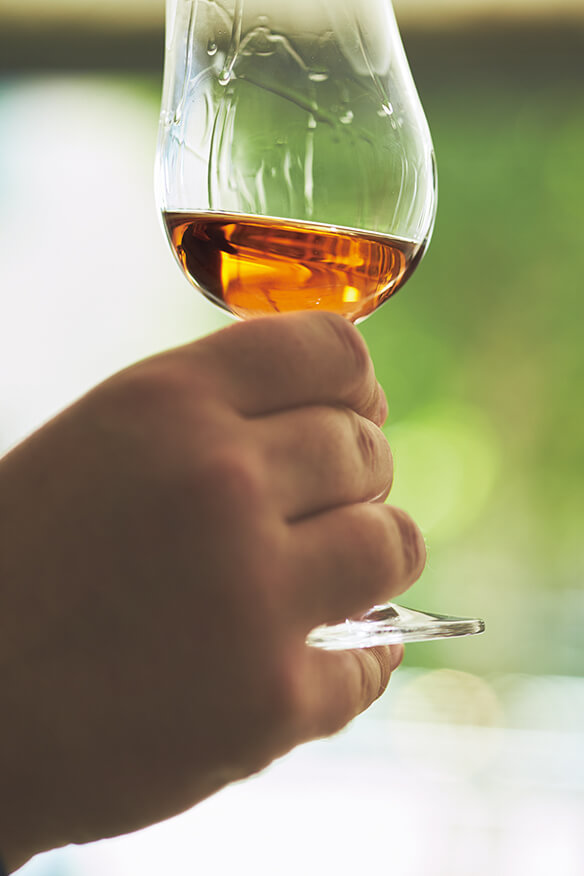
It’s easy to forget that ‘Japanese whisky’ as a category is very much a recent concept. Up until the end of the 20th century, for the consumer in Japan, it simply meant ‘domestically-made whisky’, valued – if at all – because of the low price tag rather than the inherent quality of the liquid. For consumers abroad, on the other hand, Japanese whisky was treated as a joke for the most part – as likely to be worthy of their attention as fine wine from Denmark. It’s tempting to suggest the public didn’t recognize the excellence of Japanese whisky for 80 years, but that would be to suggest Japanese whisky was and always has been of the highest quality. Obviously, that is not the case.
Japan first came into contact with whisky in 1853, when Commodore Perry illegally entered Tokyo Bay, seeking to end more than two centuries of Japanese seclusion and hoping to establish trade relations. Among the gifts he had brought was whisky – rye or bourbon whisky rather than Scotch, most likely. As Western liquor entered Japan in the decades after, enterprising locals sought to recreate those spirits. However, rather than copying the actual production methods, they tried to replicate the taste using ingredients and techniques that were familiar to them – a bit like a toddler trying to copy a Cezanne with crayons, mud and apple peels. By all accounts, most of it was horrendous and some even lethal.
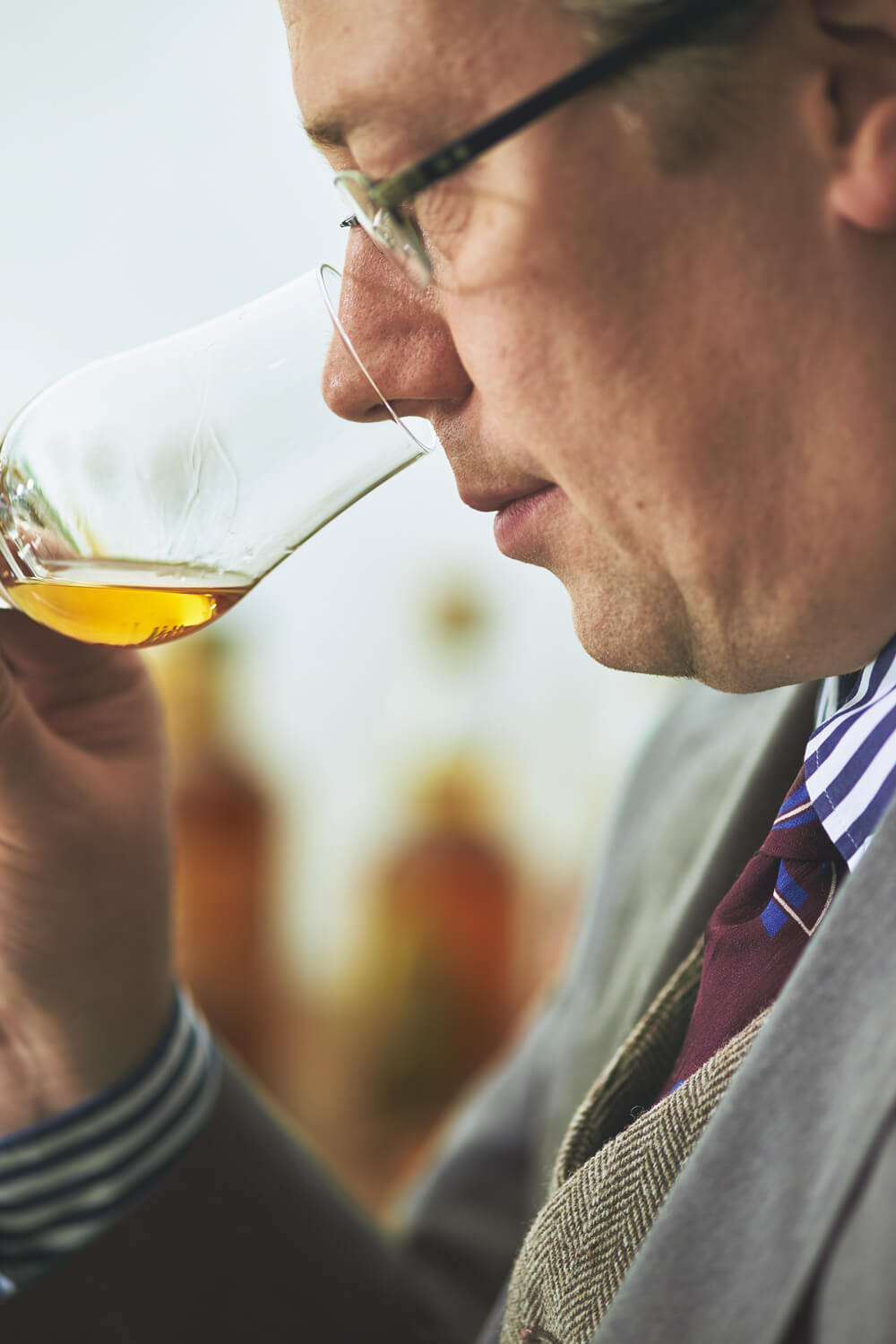
It took two men with vision to turn things around: Shinjiro Torii, who was seeking to create an authentic whisky suited to the Japanese palate, and Masataka Taketsuru, who had spent two years in Scotland learning to make whisky at the end of the 1910s. The coming together of business acumen and technical know-how resulted in the establishment of Japan’s first malt whisky distillery in 1923: Yamazaki distillery. Ten years later, Taketsuru left the employment of Torii to set up his own distillery on the northern island of Hokkaido. Even now, the companies established by these two men constitute the pillars of Japanese whisky: Suntory and Nikka.
In the decades following, smaller liquor producers in Japan also turned their hand to whisky making, which was considered child’s play compared with their main areas of production, i.e. sake and shochu. During the 60s and 70s, whisky became the oil of Japan’s spectacular economic growth, the drink of choice of the ‘salaryman’, with the curve of domestic whisky consumption following that of the recovering economy. Because of protectionist measures, almost all of the whisky drunk in Japan was domestically made.
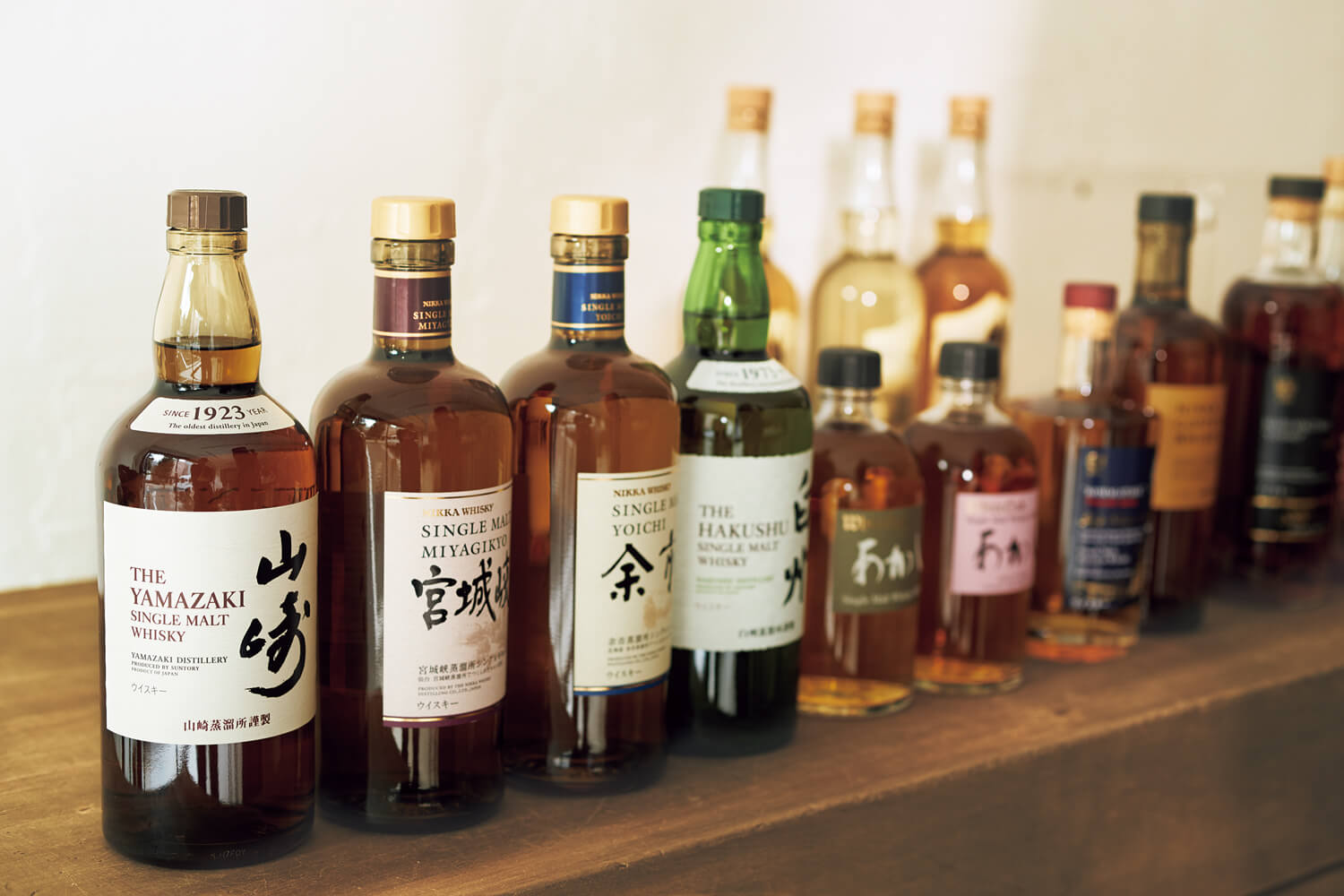
The currently available versions of the four Japanese single malt trailblazers.
Due to complex tax regulations most whisky consumed in Japan in the late 60s and early 70s was bottled between 37 and 39% alcohol by volume and contained more than 7 but less than 13 percent ‘authentic whisky’, i.e. malt whisky. The rest was (unaged) neutral spirit. Also, there was (and still is) no minimum age requirement, so you could distill today and sell tomorrow if you wanted to. For whisky makers in Japan, it was a matter of pragmatism: the consumer was happy and business was booming, so what was there to complain about? Almost none of the whisky made in Japan was exported, so outside opinions were irrelevant.
Driven by the desire to not just make more but better whisky, the 1970s saw a slow but steady move towards higher quality. Grain distilleries were established so that blends could be made using aged grain distillate, just like in Scotland; new malt distilleries were built, and consumers were also keen to climb up the ladder of quality. Both Suntory and Nikka were ready to ring in the ‘single malt era’ with the release of their Yamazaki and Yoichi single malt respectively in 1984. The quality was top notch and the timing seemed right, too. Whisky consumption in Japan had reached its peak the year before. Of course, the problem with peaks in time is that they’re only recognizable as such after the fact, when the curve is sloping downwards. In the case of Japan, this downward fall would continue for the next 25 years.
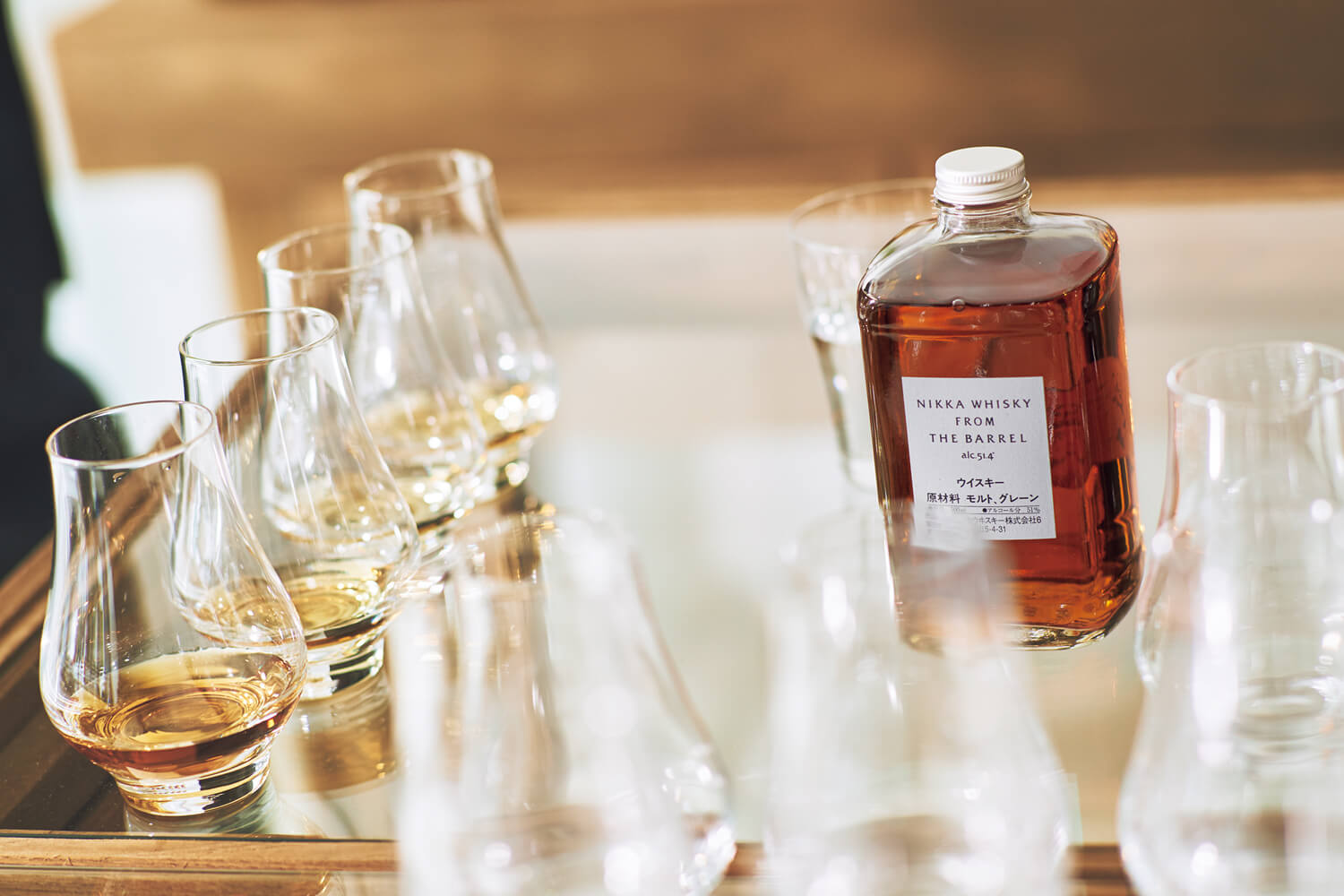
Launched in 1985, Nikka From The Barrel was the first cask-strength blended whisky in Japan. Don’t be fooled by its deliberately understated look: the price/quality ratio is second to none.
Nothing exemplifies the post-1983 fall and renaissance of Japanese whisky better than the story of Ichiro Akuto. After graduating from university, Ichiro – as he is known affectionately by his fans around the world now – started working for Suntory. He was keen to work in production, at Yamazaki distillery, but ended up in sales and marketing. In 1996, his father – the 20th generation of the Akuto family to make liquor – called him back to help out in the family business. Ichiro’s grandfather had expanded the family’s sake business in 1941 by setting up a liquor production plant in the village of Hanyu. In the early 80s, with demand for domestic whisky at an all time high, a malt whisky distillery was established. Almost as soon as the stills were fired up, things started going downhill. The Plaza Accord of 1985 led to a sharp appreciation of the yen and made it more costly to make malt whisky in-house rather than source it from abroad. The liquor tax change of 1989 was the nail in the coffin for many small whisky producers. The tax system that had protected the domestic whisky industry was removed and replaced with a level playing field, so suddenly, Japanese whiskies had to compete in the marketplace with Scotch whiskies that were often cheaper and better.
Production at Japanese distilleries was dialed back year after year until it reached point zero at many of them. At Hanyu distillery, the spring of 2000 turned out to be the last distilling season. Four years later, Ichiro’s grandfather’s company was sold to a new owner who was interested in the sake and shochu arm of the business but not the whisky side. The new owner wanted to get rid of the remaining 400-odd casks in the warehouse, which greatly upset Ichiro: ‘some of the whisky was almost 20 years old – that’s like children approaching their coming of age’. Ichiro managed to find a way to buy the remaining casks and starting going to bars around the country to try and sell Hanyu whisky a bottle at a time.
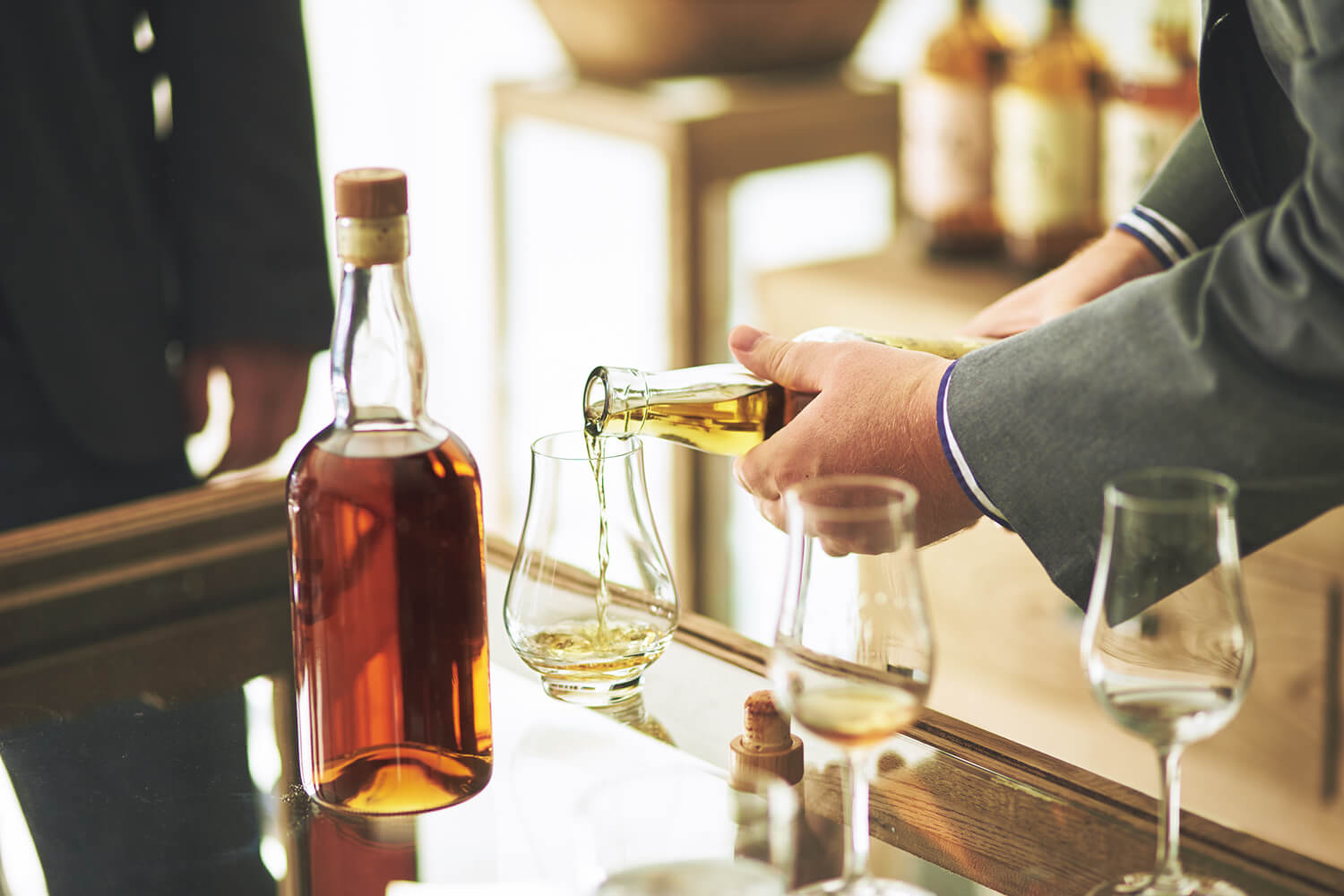
In 2007, at the lowest point of whisky consumption in Japan, Ichiro decided to set up a new distillery. This seemed like a very reckless gamble, indeed. Not to Ichiro, though: ‘on my visits to bars, I saw the beginnings of a growing interest in expertly-crafted single malt whisky’. He decided that would be his niche, built his own distillery in his hometown of Chichibu, started making malt whisky there and started winning prestigious awards left and right.
Ichiro’s popularity is such that it is next to impossible to get your hands on a bottle. Most releases sell out in a matter of seconds and even his core-range ‘Leaf Label’ whiskies are hard to find at times. What Ichiro couldn’t have known in 2007 though was that not only niche interest in domestically-made malt whisky was growing, but that mass interest would grow as well. Following a successful 2008 Suntory campaign pushing ‘highballs’ (whisky mixed with soda), general consumption of whisky started going up again for the first time in 25 years. It’s been going up ever since. The problem was that this increase in demand caught the big producers unawares. The likes of Suntory and Nikka were distilling very little a decade and a half ago, so they couldn’t just switch on the tap and respond to the demand instantly.
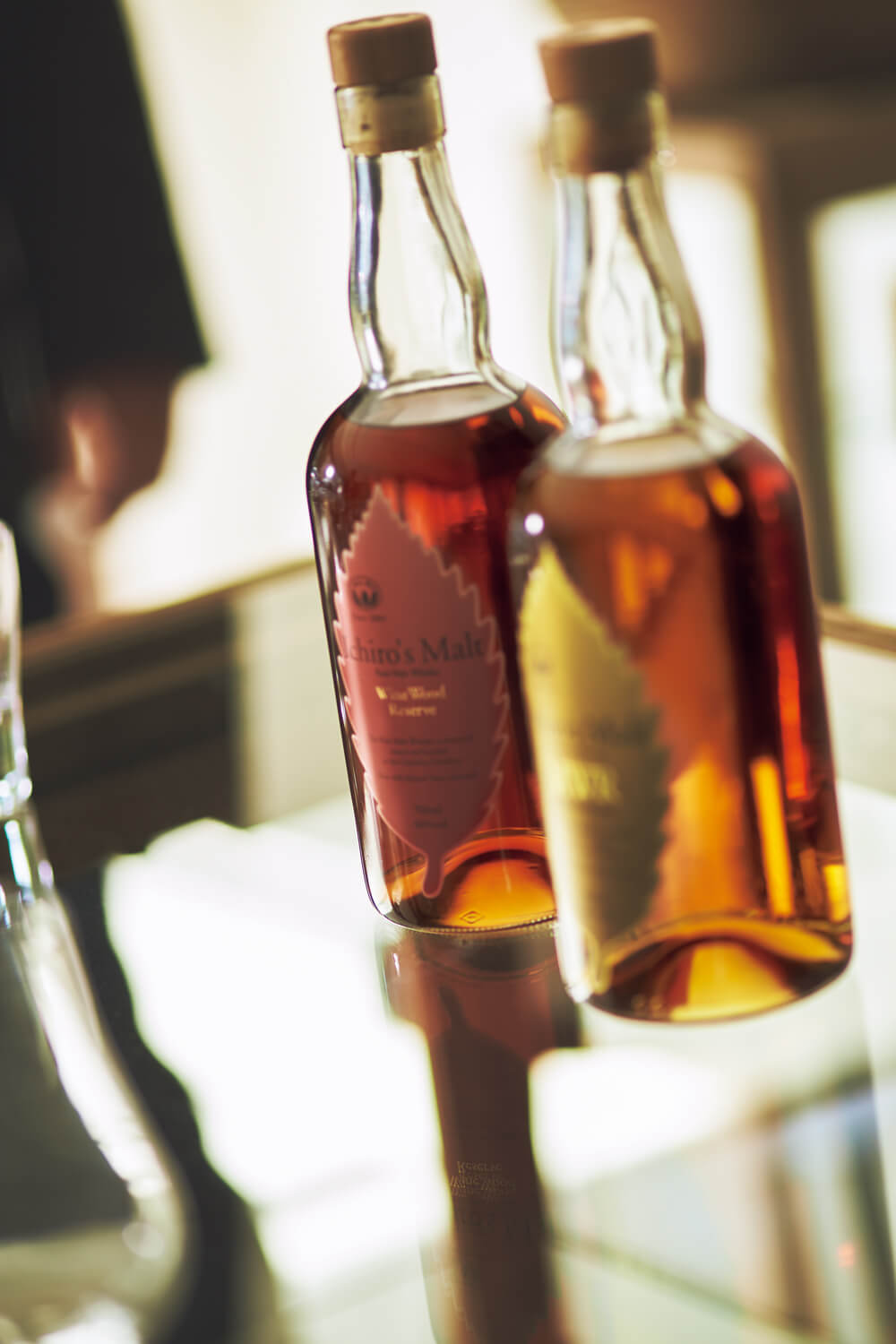
Two of the three Ichiro’s Malt ‘Leaf Label’ blended malt whiskies, finished in French oak (left) and Japanese oak (right).
A huge increase in demand at home and abroad but lack of mature stocks of whisky led to a mad scramble for crumbs. Most whiskies carrying an age-statement were discontinued and the others are available theoretically, but good luck finding them ‘in the wild’. This left a vacuum that smaller producers were keen to fill. Inspired by the success of Ichiro, new craft whisky distilleries started popping up left and right. Pre-Chichibu, there were 7 malt distilleries. Now, there are 18 with a further 4 scheduled to come on steam by next year. Most of these new distilleries are expansions of existing liquor operations and some even have a history in whisky but they’re starting from scratch – ‘newborn’ as it were – their eyes set on the future and on quality above all.
Atypically for the Japanese whisky industry, where cooperation is nil, Ichiro has happily welcomed these new distillers to Chichibu to teach them the ropes.
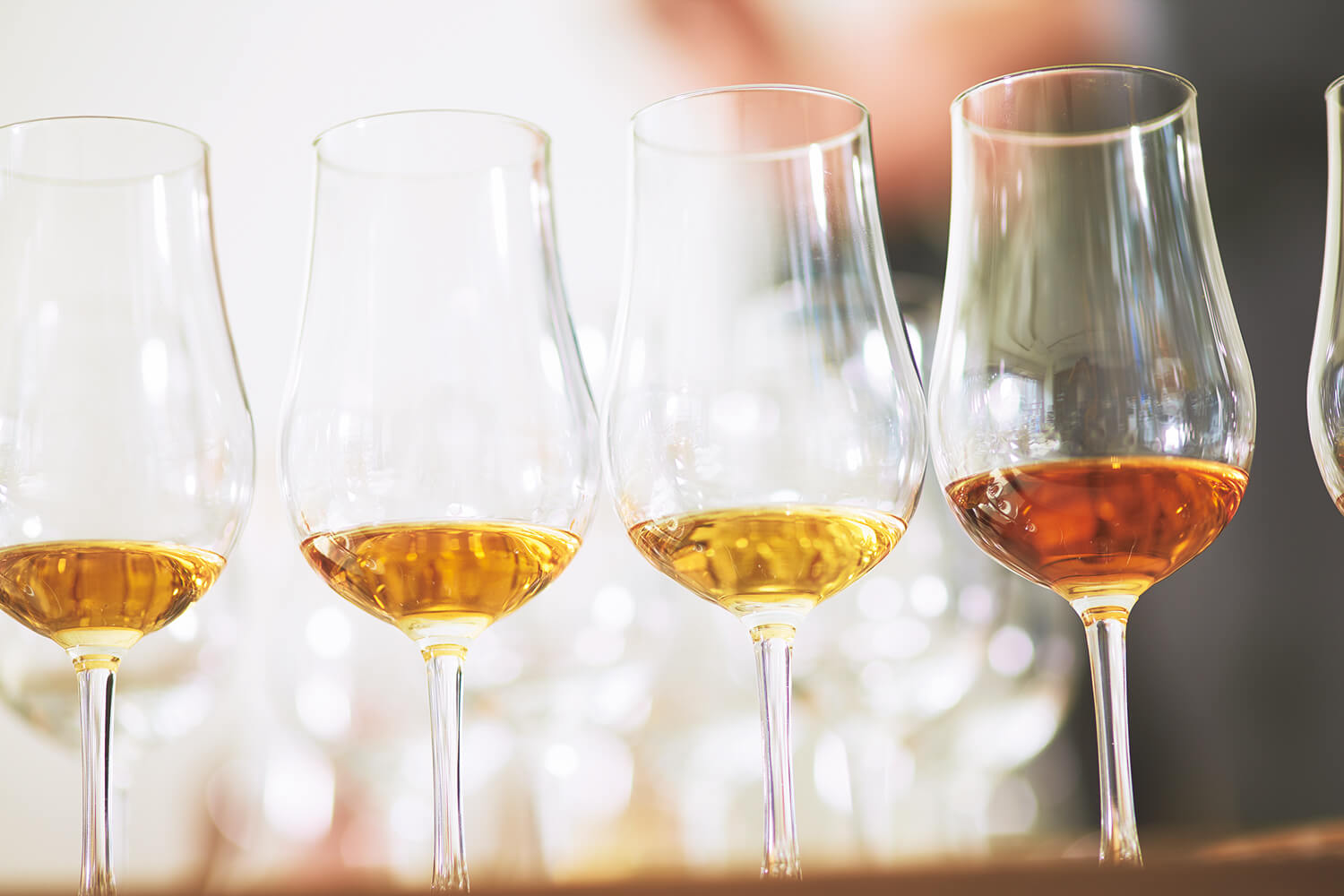
‘It’s important to keep the standard of Japanese whisky high’. And humble as always, he adds: ‘these new distilleries are stimulating people’s interest in Japanese whisky, so that’s good for us at Chichibu, too’. Tongue-in-cheek, the post-Chichibu generation of whisky distillers is sometimes referred to as ‘Ichiro’s Children’. Ichiro doesn’t see them in those terms. ‘It’s true’, he says, ‘that they visit our distillery and work here for a couple of days, but they have to make their own whisky’.
And yet, at this time of unprecedented interest in Japanese whisky and unbridled optimism and dedication to quality among serious producers, a dark cloud hangs over the party. Japan is the most loosely regulated whisky producing area in the world. The positive side of this is that there is considerable room for innovation and experimentation. A negative side effect is that unscrupulous producers are exploiting the lack of regulations by putting out products that pretend – explicitly or implicitly – to be Japanese whisky, but aren’t really. Most producers in Japan import whisky in bulk from abroad, which is used as components in some of their products. Historically, Japanese whisky makers don’t swap stock, so producers were forced to look abroad. Also, small-scale whisky makers only make malt whisky and need to get grain whisky elsewhere, i.e. abroad, if they want to make blended whiskies.
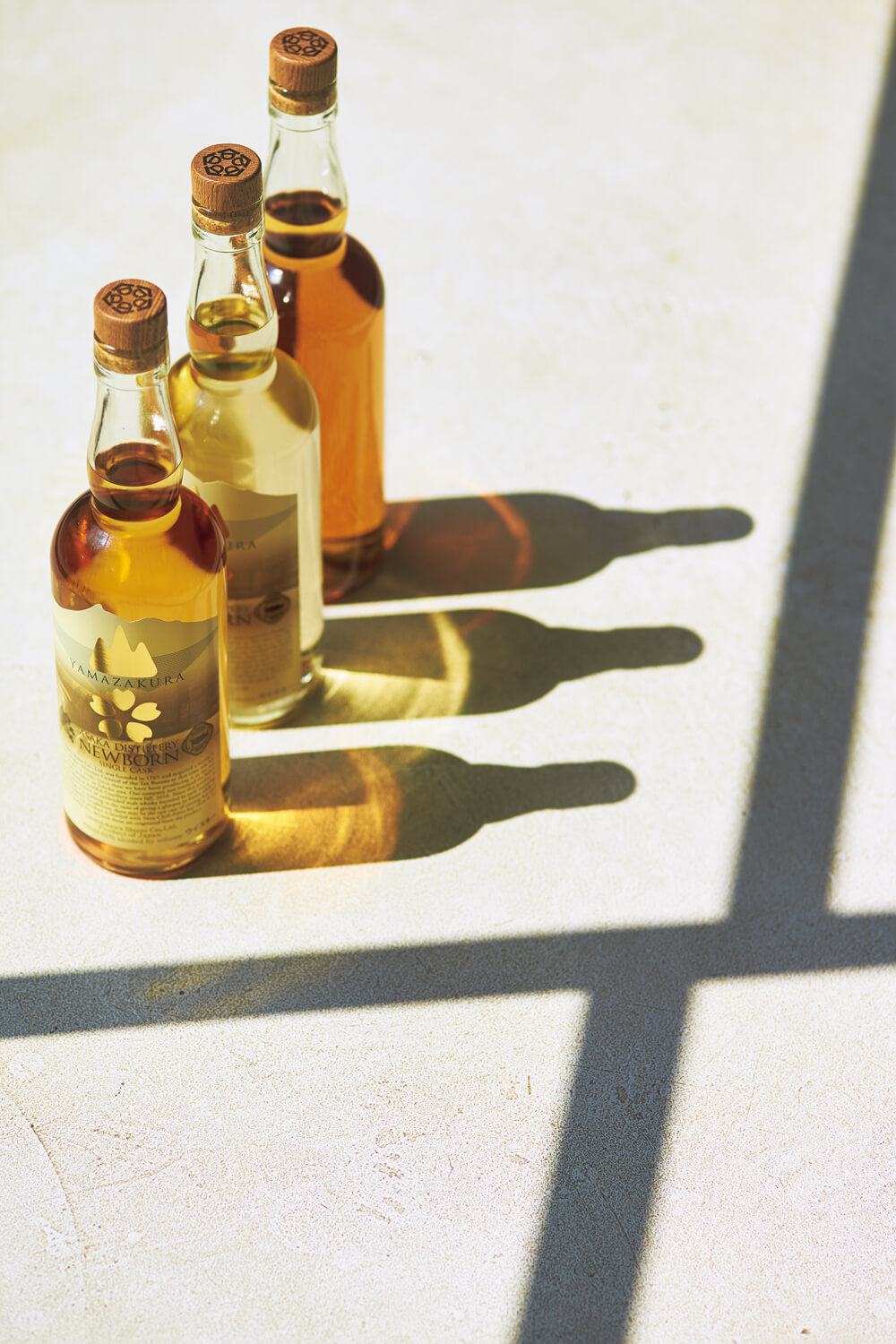
The first bottlings of one of the new, rising stars in Japanese whisky.
Ichiro also has stock imported from Scotland, the U.S., Ireland and Canada in his warehouses. He uses this for products like ‘Malt & Grain’ that are clearly labeled as ‘worldwide blended whisky’. Because of the lack of regulations, however, some shady producers are using whisky imported in bulk from abroad to make products that are labeled as ‘Japanese whisky’ or give off the appearance to be. Legally speaking, they are not doing anything wrong, but ethically, many feel this is akin to ‘whisky laundering’: Scotch whisky goes into the company and Japanese whisky comes out.
There is a growing chorus of voices among the industry that are seeking to more tightly regulate aspects of whisky production by the time of the 2020 Tokyo Olympics. If this happens, the foundations will be in place for a new ‘golden age’ for Japanese whisky, where young and small distilleries can stand next to the large and experienced ones, and collectively keep raising the bar.Watch the curve and place your bets.
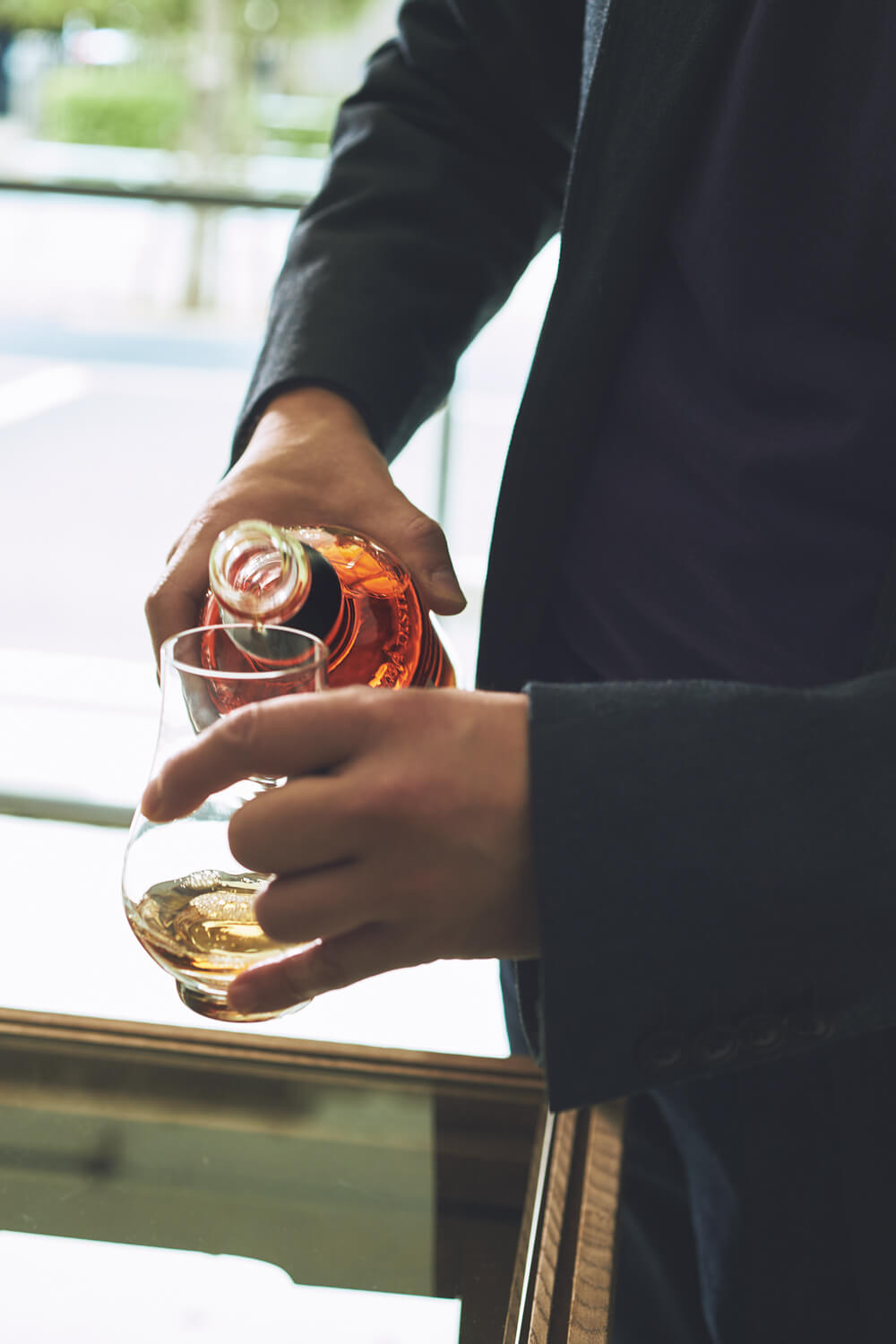
The Rise of Japanese Whisky —
#01: From the Shadows to the Light
#02: Whisky on the Red Dot >
#03: 250 Years Old Brewery Explores New Frontiers >
TRENDING
-
The Tattoos that Marked the Criminals of the Edo Period
Traditional tattoos were strong signifiers; murderers had head tattoos, while theft might result in an arm tattoo.

-
‘Shojo Tsubaki’, A Freakshow
Underground manga artist Suehiro Maruo’s infamous masterpiece canonised a historical fascination towards the erotic-grotesque genre.

-
The Story of Sada Yacco, the Geisha who Bewitched Europe
Described by Dazed magazine as the first beauty influencer, she has been restored to her former glory since 2019.

-
Ito Jakuchu's Naturalist Paintings
From 15 September until 14 October 2018, the Petit Palais showcased the artist's iconic ‘Images of the Colourful Realm of Living Beings’.

-
Chiharu Shiota, Red Threads of the Soul
Last year, more than 660,000 people visited the retrospective 'Chiharu Shiota: The Soul Trembles' exhibit at the Mori Art Museum.


